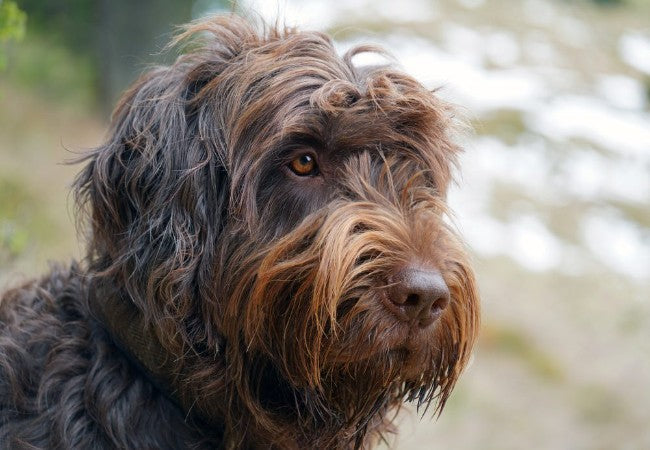Pudelpointer Guide 2025: Vet Approved History, Care & Temperament ✅🐾

In this article
Pudelpointer Guide 2025: Vet Approved History, Care & Temperament ✅🐾
By Dr. Duncan Houston BVSc
Introduction
The Pudelpointer is a medium-to-large German gun dog combining Poodle intelligence and Pointer drive. Bred in the late 1800s for pointing, retrieving, and water work, these versatile dogs are calm, obedient, and excellent family companions when given enough purpose and exercise. 🐾
Breed Origin & History 🏺
Developed by Baron von Zedlitz in 1881, the Pudelpointer was created by crossing hunting Pudels with English Pointers to merge water-loving retrieving and pointing instincts. Initial breeding used 11 Pudels and about 80 Pointers before moving to pure Pudelpointer matings. Breed clubs in Germany (VDH) and North America (NAPPA, PCNA) uphold rigorous field-testing standards.
Appearance & Coat
- Size: 22–27 in.; 44–66 lb
- Coat: Wiry, dense, water-resistant double coat; low shedding
- Colors: Liver, chestnut, black, often with white markings
- Head: Beard, eyebrows, amber eyes, drooping ears, strong neck
Temperament & Personality 🎭
Pudelpointers are calm, intelligent, and sociable. Bred for keen hunting performance, they are obedient and game-focused in the field yet goofy and affectionate at home. They typically get along with children and other pets after early socialization.
Exercise & Enrichment ⚡
These dogs need at least 1–2 hours daily of activity—tracking, swimming, fetch, hiking—to stay balanced. They excel in versatile hunting trials and dog sports. Without outlet, they may become bored or restless.
Grooming & Coat Care ✂️
- Brushing: Weekly to prevent tangles, more during shedding
- Bathing: Occasionally; avoid harsh clipping—hand-stripping for rough coats
- Ears: Clean weekly to prevent infections
- Teeth & Nails: Brush daily; trim nails monthly
Nutrition & Feeding 🍽️
Feed a high-quality, active-breed diet with appropriate portions. Support with omega-3s and joint supplements as needed. Adjust calorie intake based on workload.
Health & Genetic Screening 🧬
Lifespan: 13–15 years
- Hip dysplasia: Screen breeding dogs; maintain ideal weight
- Ear infections: Prevent via weekly cleaning
- Eye conditions: Annual exams for cataracts and PRA
- Other: Healthy overall, with fewer major problems
Training & Behavioral Support 🧠
Use positive reinforcement, consistency, and early socialization. They thrive with structured training, problem-solving games, and fox/noise exposure.
Living Environment & Compatibility 🏡
Best suited for active homes with yard or field access. Great with children and other dogs. Not ideal for apartment living unless activity needs are fully met.
Travel & Adventure 🧳
Excellent companions for outdoor adventures. Use harnesses or crates during travel. Enjoy swimming, hiking, and field work; supervise to prevent over-exertion.
Dr Houston’s Pudelpointer Wellness Checklist ✅
- 📅 Annual vet exam with hip, eye and ear checks
- 🍲 Balanced diet with active-breed nutrients
- 🏃♂️ 1–2 hours daily exercise with mental tasks
- 🛁 Weekly grooming and seasonal coat care
- 📱 Ask A Vet for tailored health & nutrition advice
Conclusion 🌟
The Pudelpointer is a loyal, intelligent, and hardworking companion suited for active, purposeful families. With the right balance of exercise, training, and care, they excel in fieldwork and shine at home—bringing both utility and devotion to every day.
Need expert support with your Pudelpointer? Visit AskAVet.com or download the Ask A Vet app for personalized care and training support anytime. 🐾






